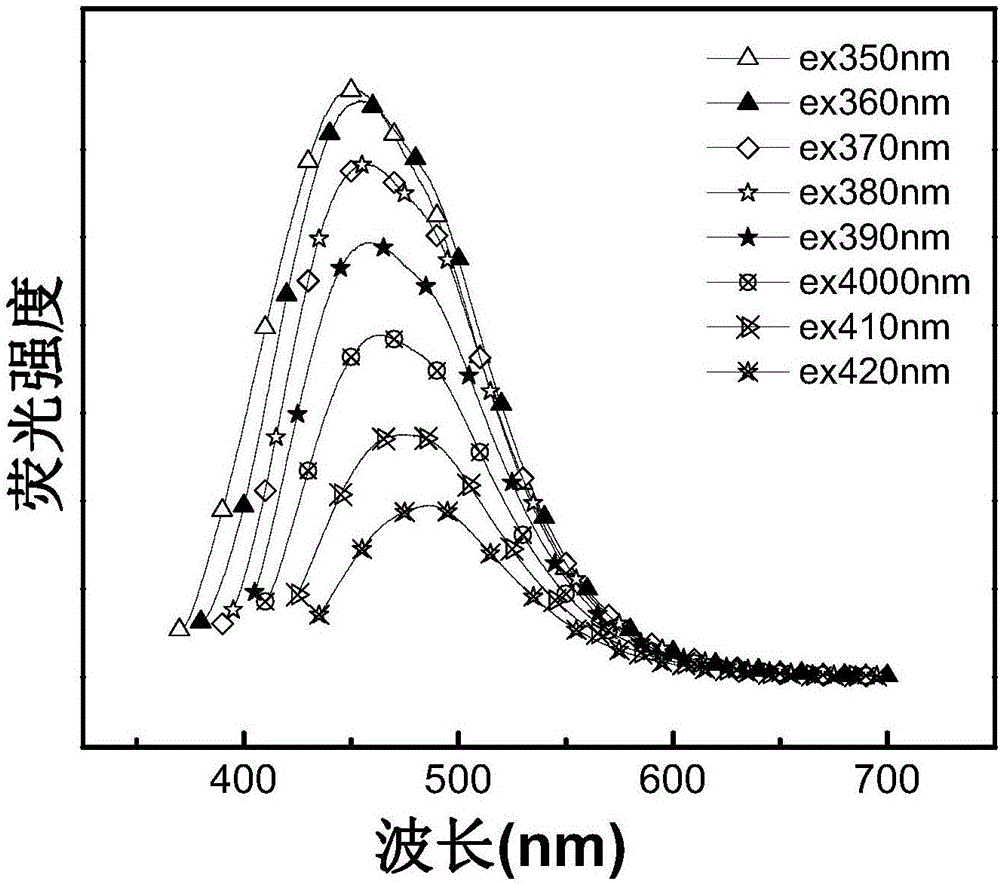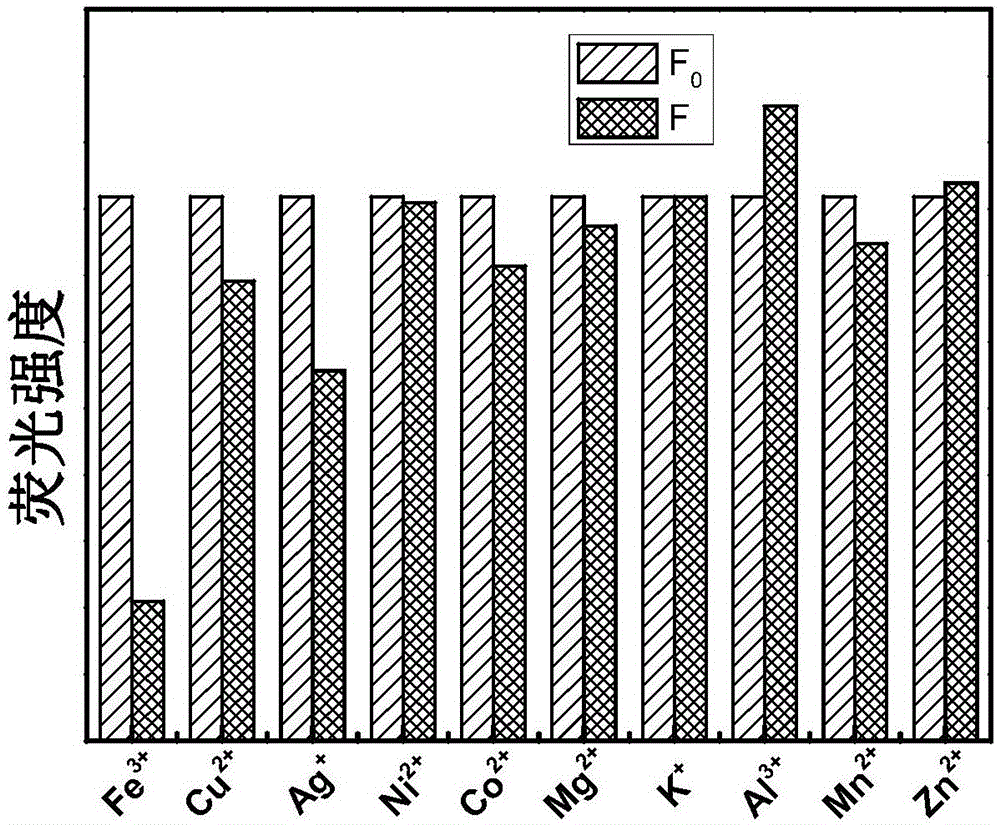Synthetic method of nitrogen and sulfur co-doped cellulosic fluorescent carbon dots
A cellulosic and synthetic method technology, applied in the direction of color-changing fluorescent materials, chemical instruments and methods, etc., can solve the problems of expensive precursor raw materials, complicated and time-consuming operation process, expensive equipment, etc., and achieve good water solubility, stable fluorescence, raw material low cost effect
- Summary
- Abstract
- Description
- Claims
- Application Information
AI Technical Summary
Problems solved by technology
Method used
Image
Examples
Embodiment 1
[0024] Put 0.5g of cellulose powder, 0.15g of sodium thiosulfate powder and 0.5mL of ethylenediamine solution into a polytetrafluoroethylene reaction kettle, and simultaneously add 10ml of ultrapure water as a solvent. Put the reaction kettle in a constant temperature oven at 180°C, react for 72 hours, centrifuge to obtain a brown carbon dot reaction solution, dialyze the reaction solution with a 500Da dialysis tube for 72 hours, and then freeze the dialyzed solution with a lyophilizer to finally obtain nitrogen Sulfur-doped cellulose-based fluorescent carbon dots (a).
[0025] The above-mentioned raw materials are commercially available analytically pure raw materials, and the cellulose can be any common cellulose.
Embodiment 2
[0027] Put 2g of cellulose powder, 3g of sodium thiosulfate powder and 0.7mL of ethylenediamine solution into a polytetrafluoroethylene reactor, and add 40ml of ultrapure water as a solvent. Put the reaction kettle in a constant temperature oven at 200°C, react for 80 hours, and centrifuge to obtain a brown carbon dot reaction solution. Dialyze the reaction solution with a 800Da dialysis tube for 82 hours, and then freeze-dry the dialyzed solution to finally obtain nitrogen-sulfur co-doped Cellulose-based fluorescent carbon dot material (b).
Embodiment 3
[0029] Put 4g of cellulose powder, 3.5g of sodium thiosulfate powder and 0.8mL of ethylenediamine solution into a polytetrafluoroethylene reaction kettle, and simultaneously add 60ml of ultrapure water as a solvent. Put the reaction kettle in a constant temperature oven at 150°C, react for 70 hours, and centrifuge to obtain a brown carbon dot reaction solution. Dialyze the reaction solution with a 900Da dialysis tube for 80 hours, and then freeze-dry the dialyzed solution to finally obtain nitrogen-sulfur co-doped Cellulose-based fluorescent carbon dot material (c).
PUM
 Login to View More
Login to View More Abstract
Description
Claims
Application Information
 Login to View More
Login to View More - R&D
- Intellectual Property
- Life Sciences
- Materials
- Tech Scout
- Unparalleled Data Quality
- Higher Quality Content
- 60% Fewer Hallucinations
Browse by: Latest US Patents, China's latest patents, Technical Efficacy Thesaurus, Application Domain, Technology Topic, Popular Technical Reports.
© 2025 PatSnap. All rights reserved.Legal|Privacy policy|Modern Slavery Act Transparency Statement|Sitemap|About US| Contact US: help@patsnap.com


